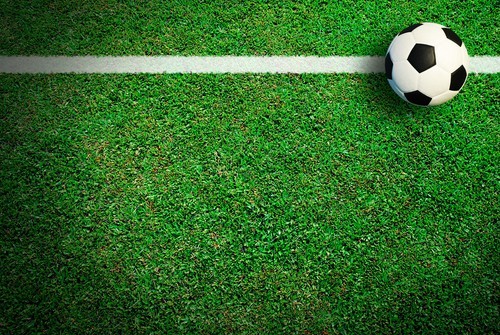This first ran 12/17/2012. The subject is timely and so is the take-home: don’t be too ready to hand over the keys.
 It was hardly the first time a ref had gotten it wrong. But the error at the 2010 World Cup was the last straw. Germany (the machine) was only beating England (the perpetual underdog) by a single goal. No fewer than five refs were milling about the pitch when Frank Lampard, an England player, took a shot on goal. It went in – for a moment. The ball hit the underside of the crossbar, bounced about two feet behind the goal line, and then bounced back out. But because all five refs were looking somewhere else at the crucial moment, it wasn’t a goal.
It was hardly the first time a ref had gotten it wrong. But the error at the 2010 World Cup was the last straw. Germany (the machine) was only beating England (the perpetual underdog) by a single goal. No fewer than five refs were milling about the pitch when Frank Lampard, an England player, took a shot on goal. It went in – for a moment. The ball hit the underside of the crossbar, bounced about two feet behind the goal line, and then bounced back out. But because all five refs were looking somewhere else at the crucial moment, it wasn’t a goal.
England probably would have lost that game anyway. Probably. But who can say? A crazy underdog goal can change the emotional trajectory of a game.
When officials make such infuriatingly bad calls, and we have technology that can do better, it’s time to use it. So this year, Fifa, football’s global governing body, finally caved on its protracted resistance against goal-line technology. This neat little piece of engineering gives officials highly accurate, real-time intelligence on whether a ball has crossed the goal line. Two contenders are making their debut right now at the Club World Cup championship in Japan. The winner will probably be used in all future high-level football games – and chip away a little more at the human animal’s willingness and ability to trust its own judgment.
If you’re a tennis fan, you’re wondering what’s taken everybody else so long. Tennis has long had its own goal line technology called (awesomely) Hawk-Eye, which tracks the ball with a smattering of high-speed video cameras stationed at different locations and angles around the court. When a player thinks a bad call has been made, they can use one of their three allotted Hawk-Eye challenges. Then, play stops while Hawk-Eye finds the ball’s last-known location, reconstructs its trajectory, and determines its most statistically-likely point of impact. It’s basic laws of physics, and it works every time. Or at least we trust it.
Hawk-Eye style technology had been under review at Fifa since 2000, but at a meeting a few months before the World Cup, the governing body decided against it.
You wouldn’t think this would be such an agonizing choice. However, there are some compelling philosophical arguments against goal-line technology. Their president has a long track record of opposing any help for referees. It would impact the purity and humanity of the sport, he has said, and “remove the enjoyment of debating mistakes.”
A slightly more convincing argument is that once it becomes mainstream, people will want to use it for everything – throw-ins, penalty kicks, and other technical issues.
Most people don’t buy the slippery slope argument. “If you use it for everything, it will slow the game down too much,” says Jonny Cooke, a professional gambler in London. “That’s going to turn football into American football.”
But then again, if it works well, you can bet that people will argue forcefully for its adoption elsewhere – most crucially for events that challenge the sport’s fierce devotion to fairness.
Some players behave badly. Stay out of the ref’s line of sight, and you can get away with murder, as one of the British Premier League football teams found this weekend. Marouane Fellaini looked around for a ref before headbutting an opposing player, did it again later before throwing an elbow into him, and a third time before flat-out punching him in the face. The ref missed all three. Most infuriatingly, when the opposing team’s keeper tried to alert the ref to what was happening, he was penalised! Was Fellaini being secretly paid by the people who make goal-line technology? Because he couldn’t have been a better poster boy.
In any sport, the ref is kind of standing in for god’s eye. But he’s limited by human fallibility. “Why do you arrange a tournament so that the whole world can see that a goal has been scored — yet you don’t allow the referee to have the same advantage?” asked Gordon Smith, a Scottish FA official, after the World Cup debacle.
So Fifa finally caved. As you read this, two different goal line technologies are being trialled at the relatively low-profile Club World Cup championship in Japan. It was a cagey choice: the risk of new technology being controversial in this odd little tournament isn’t very high.
Two technologies are facing off. One is a football customized Hawk-Eye, and the other is a German design – put together by engineers atFraunhofer Institute for Integrated Circuits that uses a ball outfitted with an internal coil that interacts with a curtain of low magnetic waves around the goal. Both send their information to the ref’s wristwatch.
It’s obvious that goal-line technology will improve football. Still, it’s a bit unnerving when you see how happy we are to hand over the keys.
Technology doesn’t change our basic human nature: it simply amplifies or mutes our already existing basic traits. And one of those traits is our notorious laziness. Our species is great at shortcuts – it’s one reason we’ve been so successful at taking over the world. When we outsource our judgment to an algorithm, the quality of the judgment improves. That’s true everywhere: evidence from high-speed traffic cameras can be used in court. Satellite imagery can confirm storm trajectories. Shortcuts have given us autocorrect instead of dictionaries, Wikipedia instead of a working memory, and GPS smartphone maps instead of a sense of direction.
 But last week, Apple was very unpopular in the southeastern Australian press thanks to the unwitting customers its buggy iPhone maps lured off-road and into snake-filled deserts. Police had to rescue several people, some of whom had been lost for 24 hours.
But last week, Apple was very unpopular in the southeastern Australian press thanks to the unwitting customers its buggy iPhone maps lured off-road and into snake-filled deserts. Police had to rescue several people, some of whom had been lost for 24 hours.
“Anyone who has used a GPS would know, they all make mistakes,” local police inspector Simon Clemence told Reuters. “You have to use your common sense and your eyes, and if it doesn’t look right, then it probably isn’t right.”
Maybe we should start thinking about which cognitive tasks should be outsourced.
Image credits
Line ball photo from Shutterstock.
Desert car from Shutterstock.
Why does FIFA not consider what’s used in international rugby union? If a try (and only a try) is in dispute, the ref refers to the TMO, who reviews video of the try line from several angles and makes the call (try, no try, or uncertain, in which case the laws allow for a 5-metre scrum).
Good question, Qaoileann, I think it must have to do with interruptions. I think the main objection to any kind of second guessing technology is that it would ruin the momentum of the sport.
Interestingly, one of the greatest tennis players of all time — Roger Federer — hates Hawk-Eye, and seldom invokes it. When he does, he is usually horribly mistaken, at least in Hawk-Eye terms. That has me questioning how accurate Hawk-Eye truly is…
That’s a really interesting question, Heather. The quest for certainty in sports comes from the quest for fairness, I think. A ref is an imperfect substitute for an omiscient perspective, so I think Hawk-Eye must reassure people that the fairest possible outcome has been achieved. But I wonder if there is any tension between a beautiful game and a fair one.
Good point about interruptions – in a game of rugby you expect a certain level of that (for penalties, setting the scrum, lineout, etc.) so referring to the TMO doesn’t count as an interruption. And it’s certainly good from a fairness point of view.
But I do think that in either soccer or rugby, when a ball either has gone over or might have, the momentum stops anyway while the players/refs/managers argue about it!
Continuing the interruption argument: In other sports, the stoppage of play to get a call right is just a commercial opportunity and a beer/loo break; in soccer, it increases the (my opinion) ungodly uncertainty of added time. The US, for one, could have done with a minute less added time.